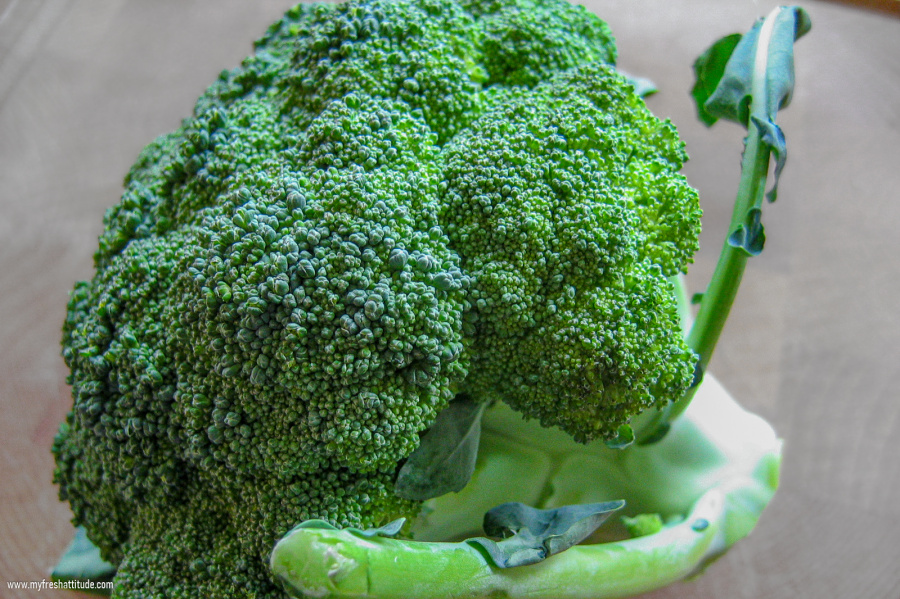
Broccoli
Broccoli is available year around in most places. It’s generally inexpensive and simple to cook…and most people have probably read or heard about broccoli’s incredible health benefits.
But curiously, broccoli is also a favorite villain – almost the poster child of most-hated vegetables. So, what causes this dramatic split in perception? My guess is lingering memories from earlier experiences of poorly cooked broccoli. And when broccoli is overcooked, it is soft and mushy…and even smells bad. Properly cooked broccoli, on the other hand, is even popular with children.
Broccoli is adaptable to many different types of cuisine. It is delicious tossed in a pasta dish with a bit of lemon, garlic, chili peppers and extra virgin olive oil. It is equally tasty when paired with ginger, rice vinegar, a splash of soy sauce and a hint of sesame oil.
Broccoli belongs to a larger group of sulforaphane plants that include non-heading and non-sprouting variations of mostly leaf and stem parts. The larger Brassica family includes bok choy, Brussels sprouts, cabbage, cauliflower, collard greens, kale and mustard greens. All of these variations share taste and nutrition characteristics with the more-familiar head of broccoli, making them all generally interchangeable in recipes.
Season: Broccoli is mostly available year around in supermarkets everywhere. The sweetest tasting and most nutritious broccoli is very fresh – meaning local and seasonal. Depending on when the broccoli was planted, field-grown broccoli reaches its peak from mid- to late summer and through early fall. Sprouting broccoli and non-heading leaf varieties are generally best during fall and even into the beginning of winter.
Selecting and Storing: Look for deeply colored heads with firm stems that are not hollow or woody. Avoid anything with yellow on the leaves or on the head – this is a sure sign of an overly mature product. The florets should be tight little clusters and not opened or blooming.
Store fresh broccoli in an open plastic bag or just punch a few holes in the bag to allow excess moisture to evaporate. Keep refrigerated 3-5 days and avoid washing broccoli before storing to prevent excess moisture that will encourage spoilage.
Preparing and Cooking: Broccoli can be prepared using different cooking methods: steaming, pan steaming, boiling, roasting or grilling. Broccoli is also perfectly ok to eat raw…perhaps dipped into your favorite condiment.
Quick pan-steaming is the method to use to preserve the most nutrients. Pan-steaming is a technique that is in between sautéing and steaming – use about 1/4 cup water and cook broccoli covered for about 5-8 minutes.
High heat roasting/grilling is a delicious alternative. Toss the broccoli heads in oil first and cook 5-7 minutes in a high heat oven. Deeply charred and almost burnt caramelization of broccoli florets is perfect when tossed with extra virgin olive oil, lemon juice, garlic and a bit of chili pepper – it’s addictive. Joshua McFadden in his book Six Seasons calls grilled broccoli “the potato chip of green vegetables.”
Nutritional Info: Broccoli, of course, is well-known for its nutritious properties. It is packed with a cocktail of nutrients that can help reduce chronic inflammation, oxidative stress and remedy inadequate detoxification.
It is an excellent source of vitamins C, A, E, B6 and K. Additionally, broccoli contains high amounts of calcium, iron, manganese, selenium, zinc and fiber.
Jack’s Fresh Tip

Broccoli florets and sliced stems freeze exceptionally well. Be sure to cook the broccoli in salted water for 2-3 minutes, cool completely and store in an airtight container before freezing. Frozen broccoli will keep 9-12 months.
Leftover cooked broccoli goes bad quickly and develops unpleasant aromas and flavor. Use within 1-2 days.
Don’t throw away the stems – they are juicy and sweet – I call it the marrow of the vegetable. Remove any hard and fibrous layers first by trimming them away. Cut into coin size pieces and cook about 1-2 minutes longer than florets.
References
- On Food and Cooking, Harold McGee
- Six Seasons, Joshua McFadden
- Vegetables, James Peterson
- The World’s Healthiest Foods, George Mateljan
- Die Jahreszeiten-Küche – Gemüse, Susanna Krebs und Hildegard Loretan
- Mediterranean Grains & Greens, Paula Wolfert
- Das grosse Buch vom Gemüse, Teubner
Recipes with Broccoli
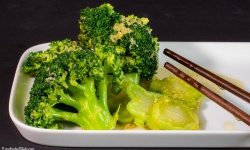
Broccoli Salad with Ginger Vinaigrette
8 5
Risotto with Cima di Rapa
1 0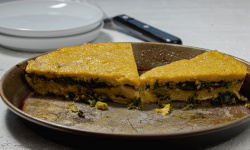
Torta di Polenta with Cima di Rapa
0 0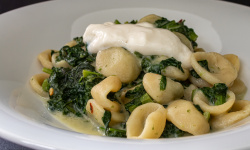
Orecchiette Pugliese
2 0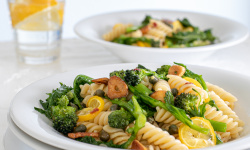
There are no comments